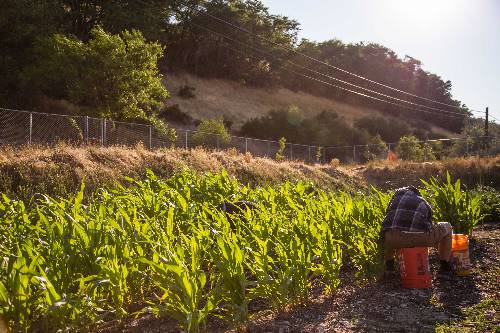Enhance Agricultural Efficiency With High-Quality Water Soluble Polymers
These polymers offer an array of benefits that can change traditional farming methods, from boosting water retention and efficiency to optimizing soil framework and nutrient distribution systems. By taking advantage of the power of ingenious polymer options, farmers can potentially open new paths towards achieving greater plant returns while minimizing environmental effects.

Benefits of Water-Soluble Polymers
Water-soluble polymers provide a multitude of advantages in farming applications as a result of their enhanced water retention residential or commercial properties and capacity to enhance dirt structure. Agriculture. These polymers, when added to the dirt, can considerably increase water holding capacity, reducing the frequency of irrigation required by crops. By creating a gel-like material when blended with water, water-soluble polymers create a reservoir that slowly launches dampness to plant origins, making certain a more regular supply of water during dry spells
In addition, these polymers help in avoiding soil disintegration by binding dirt particles with each other, consequently boosting dirt structure and stability. Improved soil framework enables far better origin infiltration and aeration, advertising much healthier plant development and greater plant yields. Water-soluble polymers likewise aid in nutrient retention by reducing leaching, making sure that crucial nutrients remain offered to plants for a longer period.
Improved Water Retention and Efficiency
Enhancing agricultural water retention and effectiveness with the incorporation of innovative polymer modern technologies has actually come to be an extremely important emphasis in modern farming practices. Water-soluble polymers play a vital duty in improving dirt structure, enhancing water seepage, and lowering water evaporation rates. By creating a slim movie on the soil surface, these polymers aid to avoid water runoff and raise the soil's water-holding ability, making certain that plants have accessibility to a sufficient water.
In addition, the use of top quality water-soluble polymers can considerably minimize the regularity of watering, as they improve the dirt's capability to maintain dampness for longer durations. This not just preserves water but additionally lowers the energy and labor costs related to watering methods. In addition, improved water retention and effectiveness cause far better nutrient uptake by plants, leading to improved plant yields and overall farming productivity.
Enhanced Nutrient Shipment Systems
Offered the considerable effect of high-grade water-soluble polymers on enhancing water retention and performance in agriculture, the emphasis currently moves in the direction of enhancing nutrient shipment systems to even more enhance crop growth and yield. Boosted nutrient distribution systems play a crucial function in guaranteeing that plants receive the essential nutrients in a type that is readily offered for uptake, advertising their total health and efficiency. By incorporating water-soluble polymers into nutrient shipment systems, the performance of nutrient uptake by plants can be considerably enhanced.
One secret benefit of making use of premium water-soluble polymers in nutrient distribution systems is their capacity to manage the launch of nutrients, guaranteeing a consistent and controlled supply to plants over a prolonged duration (Agriculture). This controlled release device assists avoid nutrient leaching and runoff, consequently making the most of vitamins and mineral utilization by plants and decreasing environmental impact

Soil Structure Optimization Techniques
Enhancing dirt structure is critical in modern agriculture for optimizing plant yields and promoting lasting land management methods. Dirt framework optimization methods play a vital duty in guaranteeing that soil offers a perfect atmosphere for plant development. One essential technique is the enhancement of organic issue, such as garden compost or manure, which aids improve soil structure by enhancing its water-holding ability and nutrient retention.
Additionally, exercising minimal husbandry or no-till farming can protect against dirt compaction and promote the development of a healthy and balanced soil structure. Cover chopping is one more efficient technique that includes growing crops specifically to improve the dirt and protect, protecting against erosion and enhancing soil framework.
Furthermore, applying plant rotation approaches can help break pest and disease cycles, while likewise boosting soil structure view it now through the varying root structures of various plants. Generally, utilizing these dirt framework optimization techniques can bring about raised agricultural performance, decreased ecological influence, and long-term sustainability in farming methods.
Lasting Solutions for Plant Returns

To address the obstacles of taking full advantage of plant returns while promoting sustainable land administration methods, discovering lasting options becomes vital in modern-day farming. One sustainable remedy for boosting plant yields is the use of accuracy agriculture methods.
Furthermore, promoting crop turning and cover cropping can assist keep soil health, lower disintegration, and improve nutrient biking, ultimately adding to greater yields with time. Integrated parasite monitoring methods also play a crucial function in sustainable crop production by lessening the dependence on chemical pesticides and promoting natural insect control techniques.
In addition, purchasing study and advancement for developing drought-resistant plant ranges and climate-resilient farming methods can assist mitigate the impact of climate adjustment on agriculture while making sure consistent yields when faced with ecological obstacles. By embracing these sustainable solutions, farmers can achieve higher crop yields while guarding the health of the land for future generations.
Final Thought
In verdict, the use of premium water-soluble polymers in agriculture offers numerous benefits such as improved water retention, improved nutrient shipment systems, and optimized dirt framework. By implementing lasting solutions for plant yields, farmers can considerably increase agricultural performance and effectiveness. Agriculture. Water-soluble polymers provide a environmentally friendly and cost-effective approach to enhance the overall performance of farming methods, visit site leading to far better results for both farmers and the atmosphere
These polymers supply an array of benefits that can transform standard farming approaches, from improving water retention and efficiency to maximizing dirt structure and nutrient delivery systems.In addition, these polymers help in stopping dirt disintegration by binding soil particles together, therefore improving dirt framework and security. By forming a slim film on the soil surface, these polymers aid to stop water overflow and increase the dirt's water-holding capacity, guaranteeing that plants have access to discover this an adequate water supply.
Soil framework optimization strategies play an essential function in making sure that soil supplies a perfect environment for plant development.In verdict, the use of high-grade water-soluble polymers in farming provides countless benefits such as improved water retention, improved nutrient shipment systems, and maximized dirt framework.
Comments on “Agriculture and Food Protection: Challenges and Solutions”